Mapping knowledge
Posted: - Modified: | pkm, learningI chatted with someone about maps and personal knowledge management, so I thought I'd write an extended reflection.
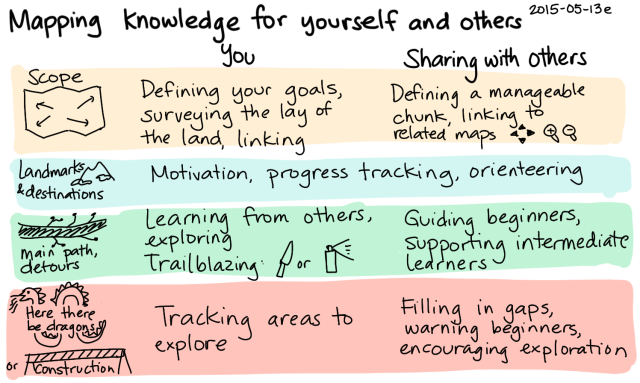
Mapping is useful for myself and for others. For managing my own learning:
- Scope: What's included, and what's not? How does this relate to other things I've learned or I'm learning?
- Landmarks and destinations: Role models, motivation, tracking progress…
- Main path, detours: How do you get from A to B? Are there interesting places in the neighbourhood?
- Here there be dragons, places under construction: Managing appropriate difficulty; tracking areas to explore or revisit
When helping other people learn, mapping lets me:
- Define scope: Define a manageable chunk, and link to related maps: zooming in, zooming out, going to other places
- Provide landmarks
- Main path, detours: Organize a reasonable path (particularly based on someone's interests) and nice detours
- Here there be dragons / construction: Warn newbies, encourage intermediate/advanced exploration
So here's my current workflow:
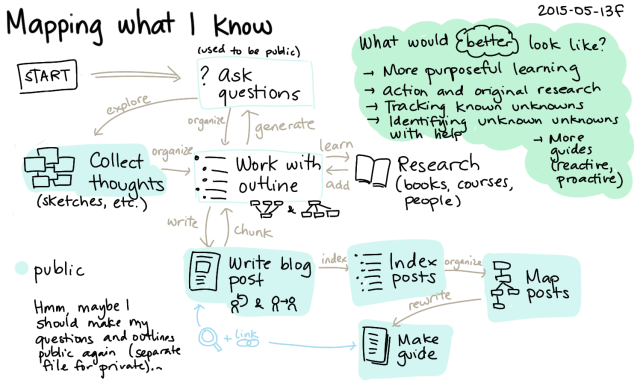
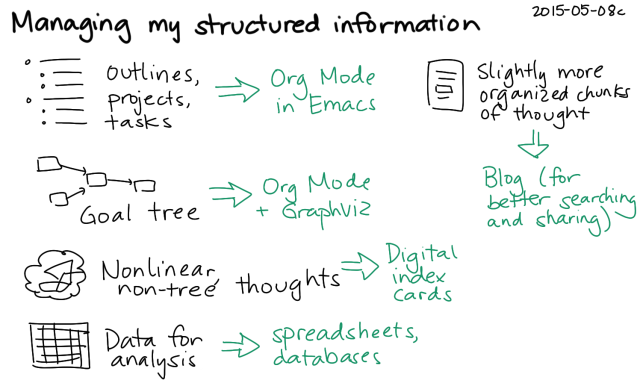
Using index cards, outlines, and chunks seems to be working well for me in terms of current thinking, although I haven't been turning my attention to organizing, fleshing out knowledge, and filling in gaps.
Here are some notes from 2013 on mapping forwards (plans) and backwards (guides for other people). I've figured out ways around some of the challenges I encountered before:
- Rough categorization of blog posts: I've written some Emacs Lisp code to help me update my blog post index monthly.
- Hundreds of sketches with few links: Now I have more than a thousand sketches! But that's okay, I have metadata in the filename, integration in my outline, and eventual chunking into blog posts.
- Duplicate metadata entry, no synchronization: Tags in the filename and a NodeJS script that sets the same tags on Flickr upload, yay
- No clear picture of follow-up questions, ideas, or actions: Outline still needs work; maybe also a quick way to review open sketches?
- No clear role models: Found historical and contemporary ones, yay!
Mostly I've been focusing on little explorations rather than map-making. It's like collecting nature specimens so that I can start to classify them, since you don't see that order until later. Sometimes I look back and retrace my path. That's when I can try to figure out where things are and how people might go a little faster or in a better order. Other times, when I'm looking forward, I'm trying to see what's close by and how to get there. I remind myself of the landmarks in the distance, too, and what progress might look like. But I can only walk the routes until I reach a height that lets me review the paths ahead, so sometimes it's just the accumulation of steps…
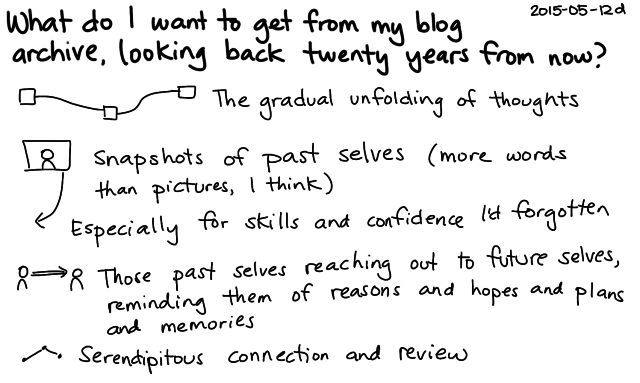
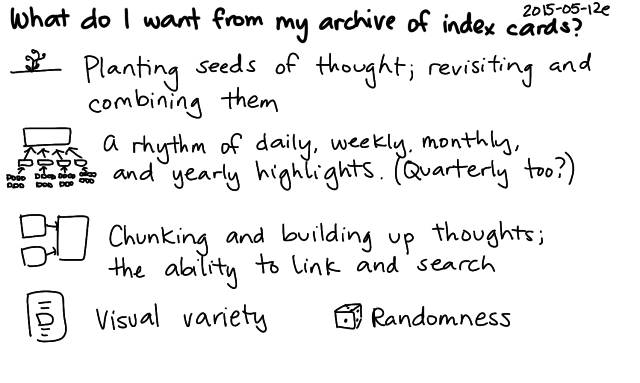

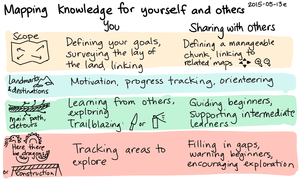
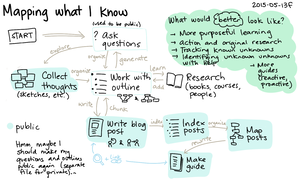
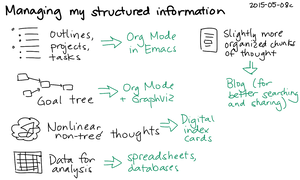
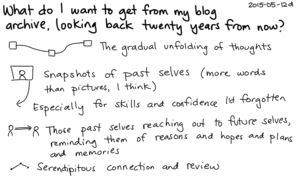
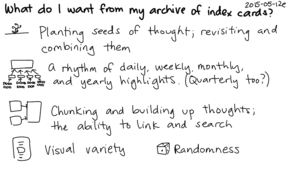
2 comments
Erik Pischel
2015-05-21T12:55:53ZWho are your historical and contemporary role models?
sachac
2015-05-22T18:29:55ZAnn Blair's book Too Much To Know: Managing Scholarly Information before the Modern Age was a great source for ancient examples of interesting note-taking and knowledge management techniques. I'm looking forward to learning more about Leonardo da Vinci (of course), Ulisse Aldrovandi, Joachim Jungius, Jeremias Drexel (apparently wrote a manual on notetaking, too), Pliny the Elder, ... Lots of folks! =)
In terms of contemporary people: Lion Kimbro experimented with writing down and mapping his every thought for a while. Niklas Luhmann (Zettelkasten) is intriguing too. And nonfiction book writers often have fascinating organizational techniques...